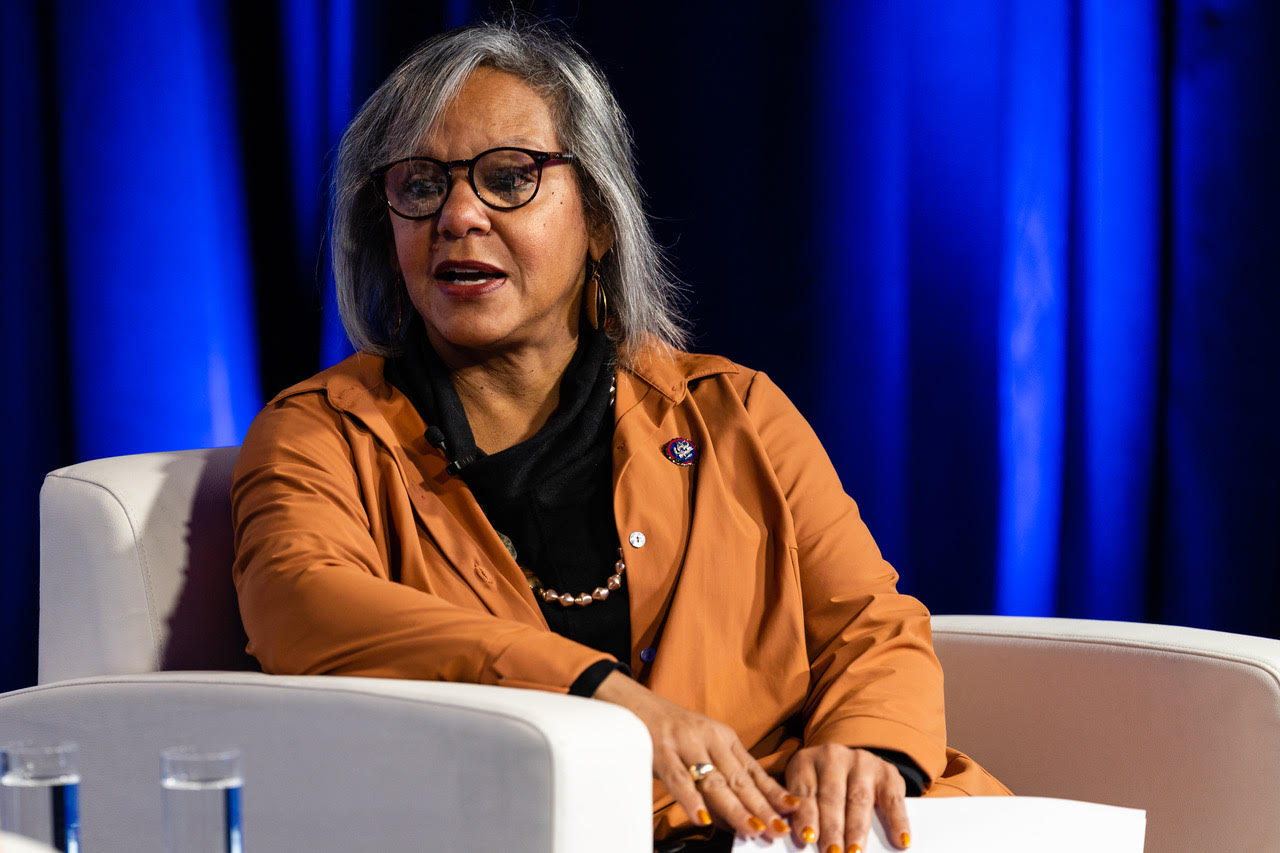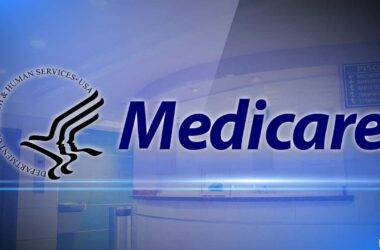Washington, DC—(ENEWSPF)—June 19, 2014.
Thank you, Michael [Botticelli], for those kind words; for your more than two decades of service and leadership in confronting the crisis posed by substance use disorders; and for all that you and your colleagues in the Office of National Drug Control Policy do every day to forge safer and healthier communities.
It’s a pleasure to help welcome this distinguished group to the White House for today’s important summit. And it’s a privilege to stand with so many experts, advocates, and extraordinary leaders from America’s law enforcement, public health, and education communities. The dedication that you have shown to confronting heroin and prescription drug abuse – not only by participating in events like this one, but through your tireless work across the country – is not only inspiring; it makes a tremendous, positive difference. Your efforts enable us to improve and save countless lives. And your guidance and expertise – when it comes to addressing the drug abuse epidemic holistically and keeping dangerous substances off of our streets – comes at a time when much is at stake, and this work could not be more important.
You know as well as anyone that the challenges we face are daunting. You’ve shown us that, as we seek to address the problem of substance abuse, it makes sense to focus on the most dangerous types of drugs. And right now, few substances are more lethal than prescription opioids and heroin.
Between 2006 and 2010 – across America – heroin deaths increased by 45 percent. That’s a shocking statistic, but it’s only one of many clear indications that we’re up against an urgent public safety and public health crisis – one that affects Americans in every state, in every region, and from every background and walk of life. We’ve learned from scientific studies, treatment providers, victims, and investigations that the cycle of heroin abuse commonly begins with prescription opioid abuse. And this can make the problem exceedingly difficult to track and to overcome.
But that’s exactly why your participation – and your leadership – is more vital today than ever before. As federal officials, law enforcement officers, medical providers, and prevention and treatment experts, each of you stands on the front lines of our effort to protect this nation from the devastating impact of illegal drug use. And together – through collaboration and cooperation among stakeholders at every level – we’re making significant strides to build a better, brighter, and more secure future for ourselves and our children.
In recent years, we have targeted the illegal supply chain. We’ve taken steps to prevent doctor-shopping by drug users and distributors. We’ve disrupted pill mills masquerading as pain management clinics around the country. We’ve developed and advocated for cutting-edge public health solutions on the state, local, and community levels. And as we speak – under the leadership of Acting Director Botticelli and his colleagues in ONDCP – we’re implementing the Administration’s 2011 Prescription Drug Abuse Prevention Plan, so we can target abuse through education, monitoring, medication disposal, and enforcement.
As Acting Director Botticelli noted, these comprehensive efforts are showing promise. But our work is far from over. Significant challenges remain before us, and a range of serious and evolving obstacles lie ahead.
Now, I have no doubt – based on the professionalism, the grit, and the insight that has characterized the work that’s underway – that we will confront the impediments ahead with determination and strength. And I want to assure you that, as you drive our national efforts into the future, you will continue to have not only my admiration and gratitude – but also my full and unwavering support. My colleagues and I – at every level of the Justice Department – are firmly dedicated to fulfilling the goals we share and combating the challenges on today’s agenda. And I’m proud to note that this is a commitment we’re backing up with robust action.
Since the beginning of this Administration, with DEA as our lead agency, the Justice Department has adopted a sweeping strategy to prevent pharmaceutical controlled substances from getting into the hands of non-medical users. We have used our regulatory authority to review and investigate new pharmacy applications to identify and prevent storefront drug traffickers from obtaining DEA registrations. And since 2010, we have joined with our regulatory partners to sponsor eight Drug Take Back events that provide the general public with a safe, convenient and responsible means of disposing of prescription drugs – providing an incentive for consumers to safely clean out their medicine cabinets. These Drug Take Back efforts have resulted in the safe destruction of over 2,100 tons of prescription drugs. And DEA is in the process of promulgating a regulation that will make it easier to establish permanent drug disposal sites nationwide.
We also have stepped up our investigatory efforts, opening more than 4,500 heroin-related investigations since 2011, and increasing the amount of heroin seized along America’s southwest border between 2008 and 2013 by 320 percent. Of course, like you, I recognize that we cannot solve this problem through enforcement alone. And we will never be able to arrest or incarcerate our way to becoming a safer nation.
This is why education, prevention, and treatment – along with vigorous enforcement – must all be significant components of any comprehensive solution. Over the past few years, the DEA and others within the Department of Justice have stepped forward to help educate pharmacists, doctors, and other health practitioners in the identification and prevention of controlled substance diversion during the healthcare delivery process. In the Northern District of Ohio, for example, our U.S. Attorney convened a summit at the Cleveland Clinic, bringing together health and law enforcement professionals to address that area’s 400-percent rise in heroin-related deaths. And across the country, DEA has participated in numerous conferences at the request of professional health care practitioner organizations to educate their members on prescription drug abuse and diversion trends. Additionally, since 2011, DEA has sponsored 34 Pharmacy Diversion Awareness Conferences in 16 states – training over 6,500 pharmacists and pharmacy techs in prescription drug abuse trends, the Controlled Substances Act, and the pharmacist’s role in preventing controlled substance diversion at the pharmacy level.
On the national level, we’re moving even more broadly – under the Smart on Crime initiative I announced last August – to put in place a range of targeted, systemic reforms to ensure that 21st century challenges can be met with 21st century solutions.
This groundbreaking new effort relies upon proven, evidence-based strategies to achieve better outcomes throughout the federal criminal justice system – and particularly with regard to nonviolent, drug-related crimes. These policy changes are predicated on the notion that our work must be informed, and our criminal justice system continually strengthened, by the most effective and efficient strategies available.
We’re also strengthening diversion programs like drug courts, veterans courts, and community service initiatives – so we can provide alternatives to incarceration for some people and offer treatment and rehabilitation to those who need it. Nationwide, the Justice Department is supporting more than 2,600 specialty courts that connect over 120,000 people convicted of drug-related offenses with the services they need to avoid future drug use.
And we’re striving to improve and reinforce reentry programs and initiatives from coast to coast – so we can enable formerly incarcerated individuals to return to their communities better prepared to contribute, and to lead, as full and productive members of society.
Let me be clear: we will never waver in our commitment to act aggressively to keep America’s streets safe and our children free from drug addiction and abuse. And we will never stop being tough on crime and the choices that breed it. But, like you, we also recognize that we must be smart, efficient, and effective as we strive to disrupt and diminish the scourge of addiction – along with the underlying conditions that trap too many individuals in a vicious cycle of drugs, criminality, and incarceration.
Like many of you, my dedication to this work is personal as well as professional – because, as a former U.S. Attorney and Superior Court judge, I have witnessed the devastating impact that prescription drug and substance abuse can have on individuals, on families, and on entire communities. I understand the importance of bringing law enforcement officers, community leaders, public health professionals, prosecutors, and other stakeholders together to confront these conditions. In fact, during my tenure as U.S. Attorney here in Washington, my staff and I pioneered the first-ever community prosecution effort in our nation’s capital. And we saw both the power and the necessity of employing an approach that draws on the passion, the knowledge, and the expertise of a wide range of authorities and citizens.
Based on the diverse perspectives represented here at the White House today, I know you share that confidence. You recognize that necessity. And that’s why you’re making sure our efforts don’t end with treatment, incarceration, or even community outreach: because, when it comes to prescription drug and heroin abuse, the problem does not begin in prisons, or in gangs, or in forgotten areas of our city streets. It begins in our neighborhoods, on our playgrounds, in our schools. It begins, all too often, at home.
At the end of the day, the most important work we do is invariably the work that takes place within our own communities – not simply as professionals, but as mentors, advocates, and counselors; as parents, neighbors, and friends. We need to make sure our kids live in neighborhoods where adults can reach out to them – where moms and dads, teachers and faith leaders, little league coaches and Scoutmasters can be trusted and positive influences in young lives. And this work must be embraced by whole communities – because it is only by standing together, through collective action and comprehensive effort, that we’ll be able to make the difference we seek.
We need your expertise – but also your passion, your dedication, and your proximity. We need your boots on the ground and your ideas in effect – here in Washington and around the nation. Especially over the last five years – through summits like this one and the partnerships you’ve forged on the front lines, national leaders in and far beyond this room have come together to learn, to strategize, to collaborate – and to act. Today, we reaffirm our commitment to push these efforts forward. And we renew our pledge to break down traditional “silos” of responsibility; to rally additional experts and allies to this cause; and to use every tool and authority at our disposal to help navigate the complex and interconnected challenges that remain before us.
We’ve seen, after all, that progress will not come easily. Positive change will not occur as quickly as we might like. But forums like this one are a testament to the importance of cooperation in the face of adversity. And as long as we keep our commitments to one another; as long as we keep seeking new ways to work together; as long as we keep striving to build on the promising work that so many of you are leading – I believe there’s good reason for confidence in where these efforts will take us from here.
I am proud to count you as colleagues and partners in the considerable work that lies ahead. I thank you, once again, for all that you’re doing – today and every day – to combat drug abuse and protect our young people. I look forward to all that we will accomplish together in the months and years ahead. And I wish you all a most productive summit.
Thank you.
Source: justice.gov








